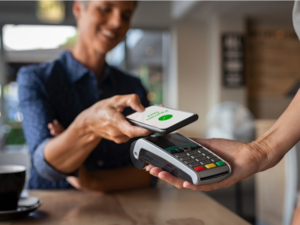
Growing Adoption of Contactless Payments and Its Risks
Over the last few years, contactless payments have exploded on an international scale and changed the way consumers pay for goods and services. While the growing trend towards tap-and-go technology brings unprecedented convenience, it also presents a slew of security risks that must be resolved by consumers and businesses alike.

The Continued Growth of Contactless Payments
Contactless payments, while convenient, are not without risks. There are security concerns that came up as the technology warms up:
Transactions without Authority Resulting from Cards Going Missing or Being Stolen
You can use contactless cards for small purchases without a PIN of Signature. And if a card is lost or stolen, fraudsters can make multiple transactions of very low value before the real owner registers the loss and reports it lost or stolen. For example, in the UK, fraud from a stolen contactless card has increased 82% in the last year.
Electronic Pickpocketing
They can be either fake and placed in front of the original one or they can be real but untouched by someone who knows how to do that without anyone noticing — They can steal your credit cards info from regular payment terminals, and they could simply read your card info. In one example, two men who put out a skimming device on a grocery store checkout; the quickness and stealth by which these devices are deployed is emphasized in the surveillance footage captured.
Cybersecurity Vulnerabilities
Since it is based on digital medium therefore contactless payment systems can be poisoned with cyberattack. European Central Bank president Christine Lagarde stressed the importance of EU-owned infrastructure for digital payments, as existing solutions are largely US or Chinese providers. So that has a risk of cyberattack making banking inaccessible as the weapon of choice for kicking off some realignment of the nation that could create massive chaos.
Data Breaches
Data breaches happen on a large scale where customer information remains exposed. Transport for London (TfL) revealed it had been subject to a cyber security breach in which data from the Oyster contactless payments scheme had been accessed in a way that bank details for up to 5,000 passengers may have been compromised.
Striking the Right Balance Between Convenience and Security
But while the convenience of cardless payments cannot be understated, the beauty of convenience should sit evenly alongside security. Consumers and businesses can take a number of measures to reduce risk:
Check on Acct. Transactions — Check your bank statement & transaction history to be sure of no unauthorized activities.
Transaction limits: Users can set Contactless transaction lower limits whereby, in case of fraud, the user will not lose high amount of money.
Tip 6: To use mobile wallets with biometric authentication: Mobile payment solutions like Apple Pay and Google Pay provide an extra security layer that is transparent to the user, as they must pass fingerprint or facial recognition to be able to use it, making unauthorized use more difficult.
Be Aware: Knowledge of common scams and security risks helps consumers spot issues before they fully develop.
The Evolution of Contactless Payments
The future of contactless payments is only going to diversify and expand. Usage of Visa’s Tap to Phone technology by merchants saw a 200% growth year-on-year, showing significant adoption and integration of contactless solutions.
But with the evolution of technology, the cybercriminals are also coming up with advanced methods. Improvements in security and education of consumers are vital to guarantee that the use of contactless payment is not overthrown by their risks.
In summary, contactless payments have transformed the way people transact — providing speed and convenience at the tap of a card or mobile device. So, whilst this technology is fantastic, consumers, and businesses need to remain cautious and aware. However, if we understand the risks involved with this technology and take proper protective measures we can get the benefits of this technology with minimum threats to ourselves.
Our Post


Beyond Budgeting: Master Your Money with the Power of Conscious Spending

